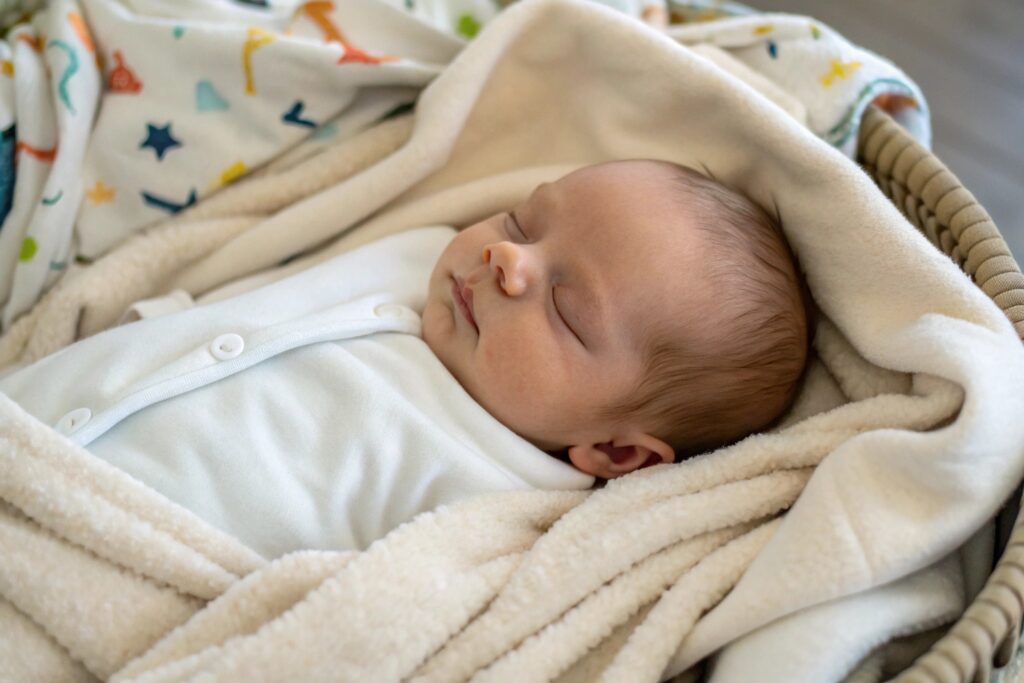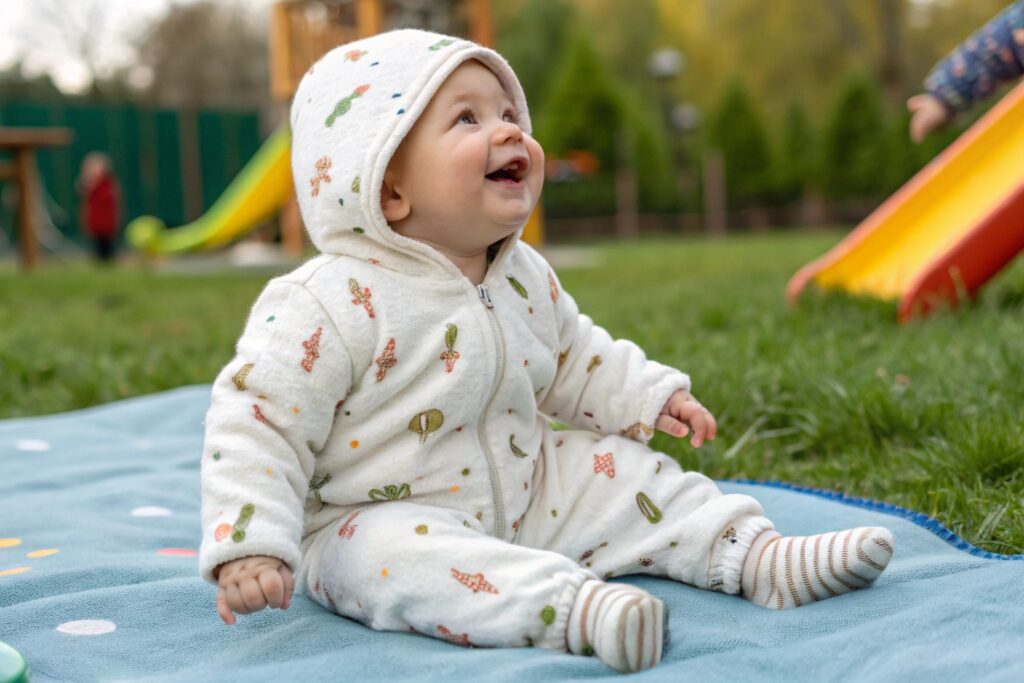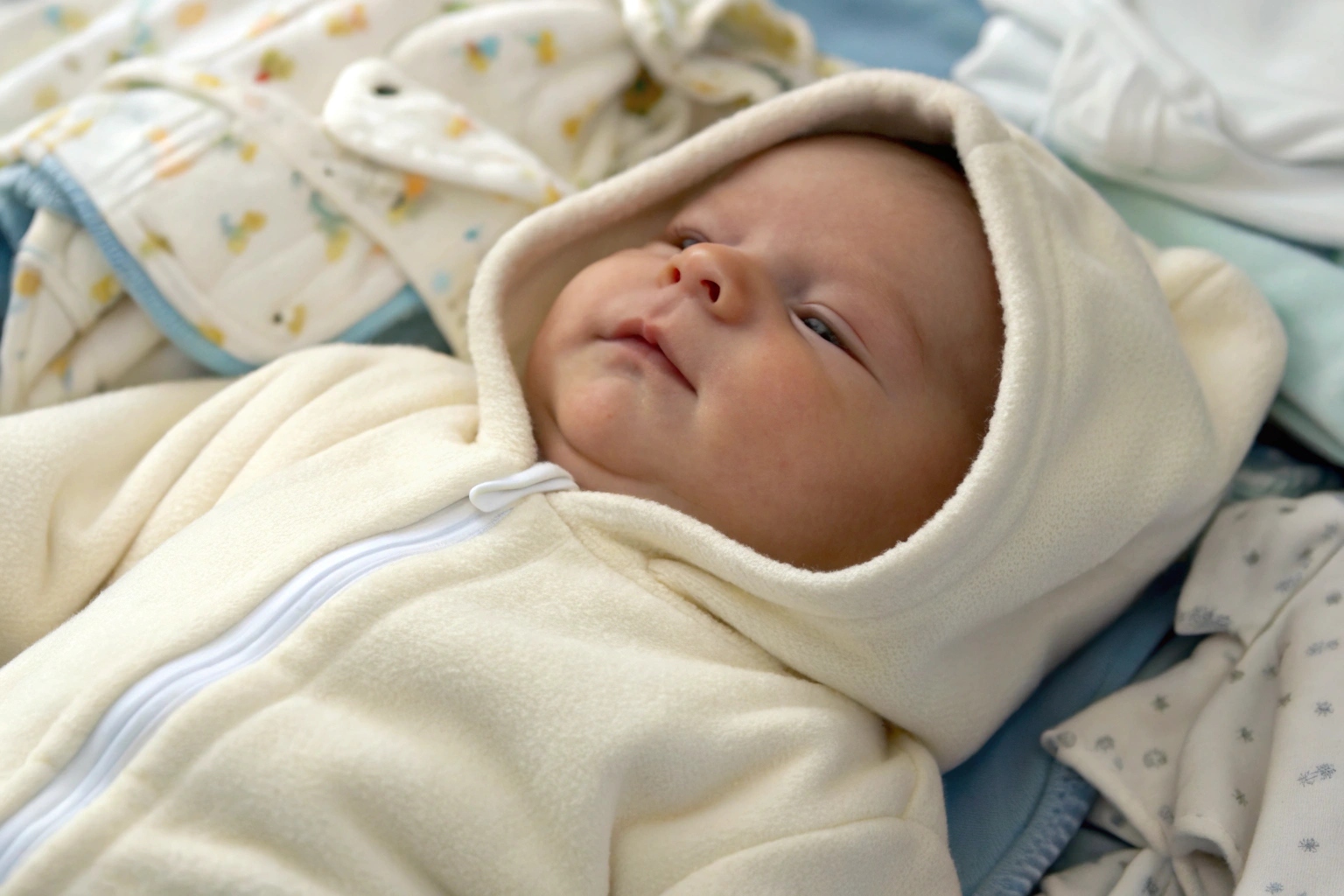In today’s world, parents want more than cute—they want safe, sustainable, and skin-friendly clothing for their little ones.
Organic cotton offers multiple benefits for children’s clothing: it’s gentler on sensitive skin, better for the planet, and trusted by parents seeking chemical-free options.
Let’s take a closer look at why organic cotton is becoming the gold standard for conscious babywear.
How Organic Cotton Protects Sensitive Young Skin?
Newborn and toddler skin is delicate—thinner, more absorbent, and highly reactive to irritation.
Organic cotton protects young skin by eliminating harmful residues from pesticides, dyes, and chemical finishes found in conventional fabrics.

What makes organic cotton so gentle?
- No harsh chemicals used in farming or finishing
- No synthetic softeners or chemical bleach
- Naturally breathable and hypoallergenic
- OEKO-TEX® and GOTS-certified options assure safety
| Skin Concern | Organic Cotton Advantage |
|---|---|
| Eczema or rash | No irritants from pesticides or dyes |
| Heat/sweat sensitivity | Breathable fibers wick moisture away |
| Chafing from seams | Softer yarns, smoother finishes |
| Allergy risk | Less exposure to formaldehyde or toxins |
Organic cotton is especially preferred for onesies, swaddles, undergarments, and pajamas—items that sit closest to a child’s skin for long hours.
Why Eco-Conscious Parents Prefer Organic Kidswear?
More than ever, parenting is about protecting not just the child—but the future they’ll grow into.
Eco-conscious families choose organic cotton because it reflects their values: health, sustainability, and mindful consumption.

What values drive parents toward organic babywear?
- Health-first thinking: Less exposure to harmful residues
- Environmental protection: Reduces soil and water contamination
- Animal and worker safety: Organic farming avoids toxic exposure
- Minimalist lifestyle: Buy fewer, higher-quality pieces that last longer
| Parent Motivation | Organic Clothing Response |
|---|---|
| Healthier for baby | Free of toxins and synthetics |
| Lower environmental impact | Less water, no GMOs, no chemical runoff |
| Ethical sourcing | Fair labor and transparent supply chains |
| Better long-term value | Lasts longer, easier to resell or pass down |
These parents often share organic brands with friends, post them on social media, and build loyalty to those that reflect their values.
What Makes Organic Cotton Safer Than Conventional Fabrics?
The real difference starts at the source: the farm.
Organic cotton is grown without toxic pesticides, insecticides, synthetic fertilizers, or genetically modified seeds—making it fundamentally safer for humans and the environment.

Key differences between organic and conventional cotton:
| Factor | Conventional Cotton | Organic Cotton |
|---|---|---|
| Farming Chemicals | Heavily sprayed (up to 25% of global pesticides) | No toxic inputs used |
| Seed Source | Often genetically modified | Non-GMO |
| Soil & Water Impact | Depletes and pollutes | Preserves biodiversity, healthier soil |
| Fabric Treatment | Uses bleach, heavy dyes, softeners | Processed with gentle, low-impact agents |
Why does this matter for kids?
Young children:
- Absorb chemicals faster through their skin
- Sleep longer, increasing skin-to-fabric contact
- Chew on clothing and blankets
- Are more vulnerable to hormone-disrupting substances
Choosing organic cotton is a simple, powerful way to minimize exposure.
How Organic Materials Support Sustainable Fashion for Children?
Fast fashion isn't just an adult issue—it affects kidswear, too. But children’s clothing doesn’t have to come at a cost to the planet.
Organic materials support sustainable fashion by reducing waste, pollution, and overconsumption—while offering long-lasting quality parents appreciate.

How does organic kidswear promote a better future?
- Durability: Organic cotton tends to last longer and resist pilling
- Reusability: Clothes can be passed down or resold instead of thrown out
- Production integrity: Encourages fair wages and safer factories
- Lower footprint: Organic cotton uses up to 91% less water than conventional farming
| Sustainability Benefit | Organic Cotton Role |
|---|---|
| Less water consumption | Rain-fed, no irrigation |
| Biodegradable material | Breaks down naturally after use |
| Reduced fashion waste | Longer lifecycle, better quality |
| Responsible supply chain | Often includes traceable sourcing |
For small brands, organic materials also offer marketing value, showing customers you stand for something more than trends.
Conclusion
Organic cotton offers a powerful combination of gentleness, safety, and sustainability that resonates with today’s families. Whether you’re a parent shopping for peace of mind—or a brand building trust—organic kidswear is more than a trend. It’s a thoughtful investment in comfort, conscience, and the future.










